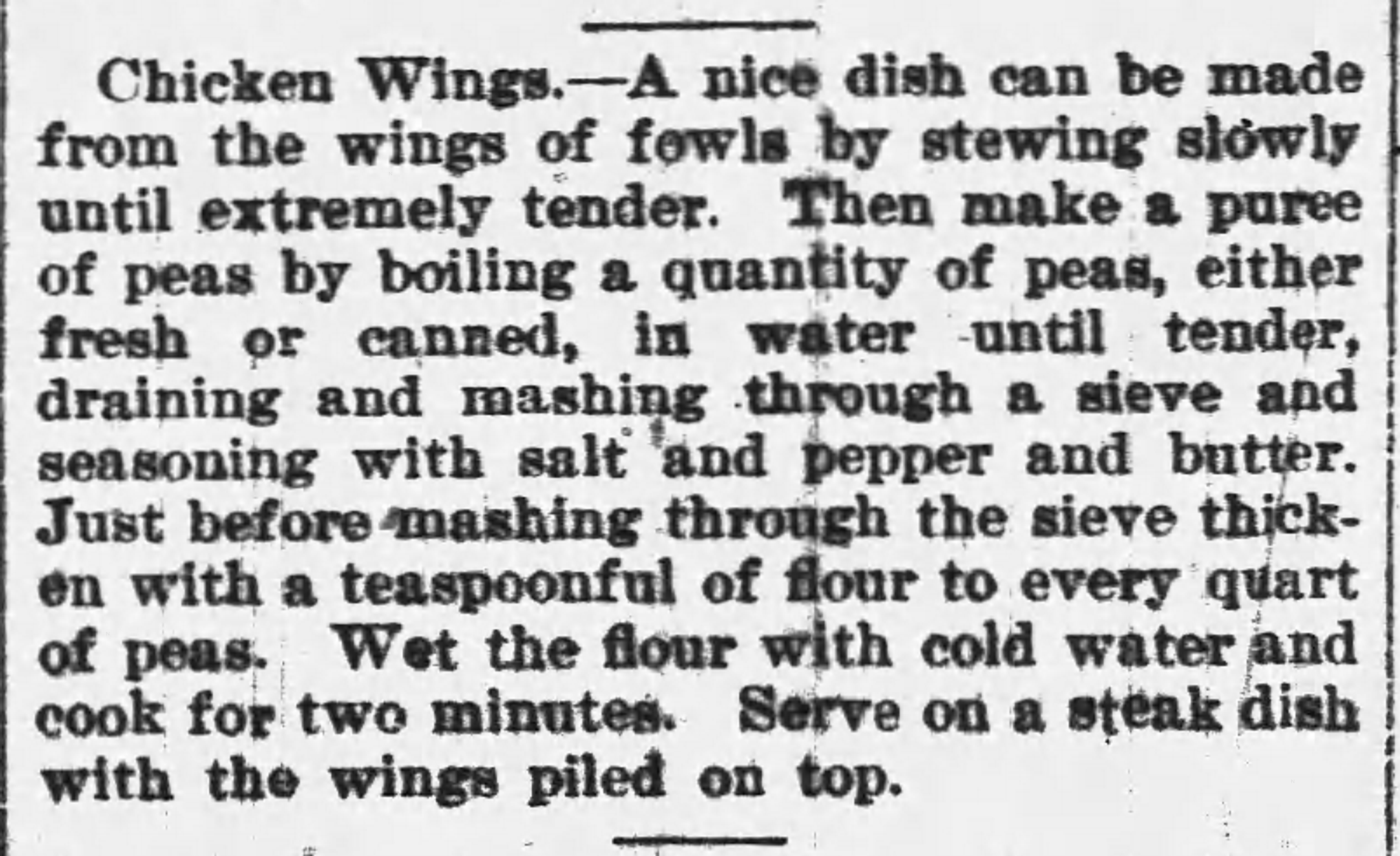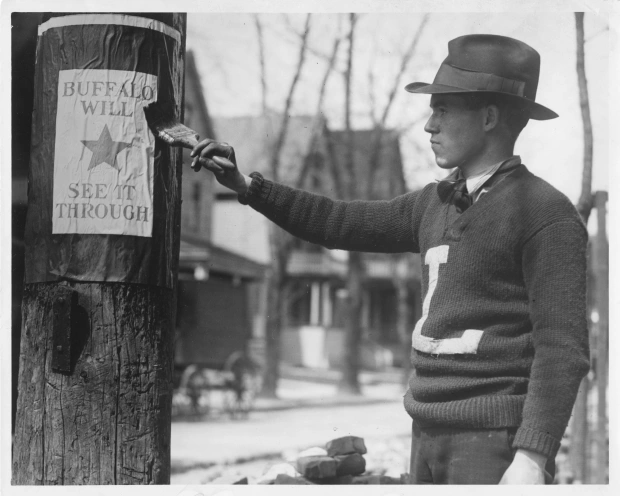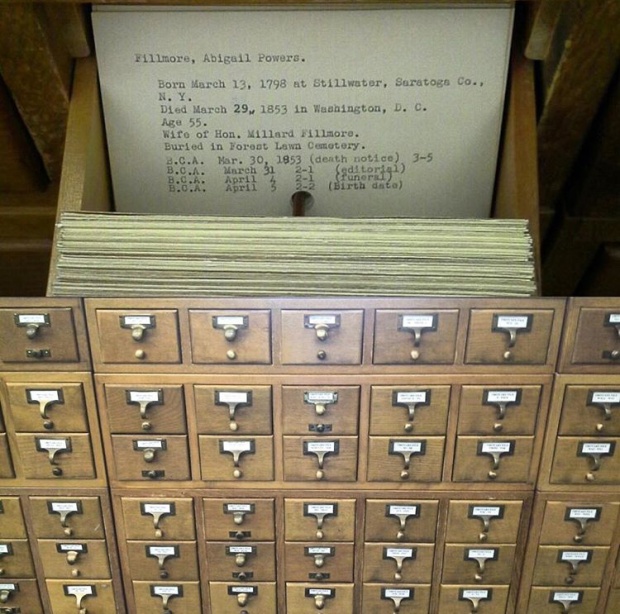When the Pan-American Exposition closed on midnight of November 2, 1901, then what happened? The process of dismantling Exposition buildings, clearing the grounds, filling in the canals, and subdividing the parcel into streets and house lots took several years. Today, the former Exposition grounds are completely replaced by residences, commercial and industrial buildings, and parking lots.
Apart from our Museum, built as the New York State Building, no other structures designed and built for the Exposition remain on the former Pan-Am grounds. The closest runner-up is the wood frame cottage at 1950 Delaware Avenue, which is now emblazoned with a large “Pan-Am House” sign. This cottage predates the Exposition and was on the grounds when the land was acquired. It was repurposed during the Exposition as part of the Indian Stockade, then returned to private residential use.
Here are selected events in the long process of demolishing the Pan-American:
November 2, 1901: Almost 125,000 people witness the closing of the Exposition. Buffalo Morning Express, Nov. 3, 1901
November 9, 1901: The Exposition closes with a $3,000,000 deficit. Literary Digest, Nov. 9, 1901, p. 561.
November 15, 1901: Representatives from the Chicago House Wrecking Co. arrive in Buffalo to negotiate a contract to demolish the Exposition. Buffalo Enquirer, Nov. 15, 1901.
December, 1901: Chicago House Wrecking Co. bids $132,000 to dismantle the Pan-American, anticipating that the project can be completed in 150 days. The Radford Review, December 15, 1901, p. 36.
December, 1901: Many smaller buildings are already salvaged for lumber to satisfy creditors; extensive vandalism of statues and grounds. The Exposition is fenced and guarded to prevent unauthorized entry. Collier’s Weekly, December 28, 1901, pp. 19, 23.
February 26, 1902: Chicago House Wrecking Co., frustrated by battles among creditors, withdraws from negotiations to purchase Pan-American buildings. Buffalo Commercial Advertiser, Feb. 26, 1902.
February 28, 1902: Chicago House Wrecking Co. finalizes the purchase of the Pan-American buildings for $80,000. Buffalo Commercial Advertiser, Feb. 28, 1902.
March 5, 1902: Chicago House Wrecking Co. begins demolition of the Pan-American. Buffalo Enquirer, March 5, 1902.
March 7, 1902: Park Commissioners petition the Buffalo Board of Alderman for a $28,500 appropriation to restore Delaware Park grounds damaged by the Exposition. Buffalo Commercial Advertiser, March 7, 1902.
March 16, 1902: Grounds reportedly littered with the rubble of broken columns, statuary, lamp posts, and carvings. Exposition paths disfigured by mud; canals filled with ice, mud, and chunks of plaster. Buffalo Daily Courier, March 16, 1902.
May, 1902: Chicago House Wrecking Co. issues a special Pan-American catalog listing materials available for sale from the Exposition. The Theodore Roosevelt Inaugural National Historic Site owns a copy of this catalog and has digitized it. Science & Industry, May, 1902, p. 271
July 1, 1902: After a buyer fails to materialize, the Goddess of Light statue is toppled from the top of the Electric Tower, shattering on the ground. Buffalo Sunday Courier, July 13, 1902.
July 1, 1902: Pan-Am Company President John Milburn successfully lobbies Congress to pass the Pan-American Relief bill, which will compensate creditors and bondholders. Buffalo Sunday Courier, July 13, 1902.
August, 1902: Amherst Street restored as a public right-of-way. Buildings still standing include the Temple of Music, Ethnology, Liberal Arts, Service, Machinery, Electricity, Acetylene, Emergency Hospital, and Bismarck Café. The Clay Worker, August, 1902, p. 158
October, 1902: Chicago House Wrecking Co. predicts that removing all buildings from the grounds of the Exposition will be completed by January 1, 1903. Buffalo Commercial Advertiser, Oct. 6, 1902.
April, 1903: Temple of Music, Ethnology, and Acetylene buildings still standing. About 50 feet of the base of the Electric Tower still standing. The Clay Worker, April 1903, p. 461
April 9, 1903: Chicago House Wrecking Co. employee Bert Marren falls to his death from the Electric Tower. Buffalo Morning Express, April 10, 1903.
August, 1903: George W. Jennings assumes the contract from the Chicago House Wrecking Co. to clear the grounds of the Exposition, anticipating that the process will take another year. The Temple of Music is finally demolished. Buffalo Enquirer, Aug. 1, 1903.
February, 1905: John Milburn’s portrait in the Buffalo Club is defaced with a chalk inscription, “For God’s sake, let us forget.” New York Times, Feb. 14, 1905
1909: The S. B. Nye Company begins residential development of the former Exposition grounds between Elmwood, Nottingham, Lincoln Parkway, and Amherst Streets, calling the subdivision Nye Park. The Buffalo & Erie County Public Library has digitized a Nye Park promotional brochure.
You may also like our Pan-American Exposition Buildings Guide, which gives the fate of individual buildings, as best as we could tell.
Cynthia Van Ness is the Director of Library and Archives at The Buffalo History Museum. This article originally appeared in our member newsletter The Album, Spring 2018.







 Part of the process of preparing for a major exhibit is to get familiar with the relevant material items in our collection. One of the things we did in the Library is to compile a bibliography, called
Part of the process of preparing for a major exhibit is to get familiar with the relevant material items in our collection. One of the things we did in the Library is to compile a bibliography, called 
 Starting in the mid-1960s, a Greek immigrant named James Eoannou purchased his friend’s concession pushcart and began selling popcorn, peanuts, and corn-fritters in North Buffalo neighborhoods. He later moved to Delaware Road and began servicing the suburban neighborhoods in the Town of Tonawanda and the Village of Kenmore. One of the signals that summer had come to Buffalo was the arrival of the popcorn man. James was a full-time cook for the Buffalo Athletic Club and loved to go for long, rambling walks. He decided to put his walks to good use and bring some joy to children, and often the adults, of these neighborhoods.
Starting in the mid-1960s, a Greek immigrant named James Eoannou purchased his friend’s concession pushcart and began selling popcorn, peanuts, and corn-fritters in North Buffalo neighborhoods. He later moved to Delaware Road and began servicing the suburban neighborhoods in the Town of Tonawanda and the Village of Kenmore. One of the signals that summer had come to Buffalo was the arrival of the popcorn man. James was a full-time cook for the Buffalo Athletic Club and loved to go for long, rambling walks. He decided to put his walks to good use and bring some joy to children, and often the adults, of these neighborhoods. 
 2. Read a newspaper published the day you were born. We have Buffalo newspapers on microfilm from 1811 to about 2011, including Polish and German papers published here. We can get out y
2. Read a newspaper published the day you were born. We have Buffalo newspapers on microfilm from 1811 to about 2011, including Polish and German papers published here. We can get out y 5. Look at Buffalo & Erie County atlases. We have roughly one per decade from 1850 to 1950, with a few gaps. What’s great about them is that they show footprints of individual houses & buildings that used to be there or might still be there today. You can look at them one by one and see when your house first appears, which helps you narrow down when it was built.
5. Look at Buffalo & Erie County atlases. We have roughly one per decade from 1850 to 1950, with a few gaps. What’s great about them is that they show footprints of individual houses & buildings that used to be there or might still be there today. You can look at them one by one and see when your house first appears, which helps you narrow down when it was built. 10. Pick our brains. Got a Buffalo-area history question or research problem and you don’t know where to start? Our expert librarians are on duty whenever the Research Library is open to the public. While we cannot undertake your research for you, we can identify and pull out relevant books, clippings, atlases, pictures, microfilms, or more, to get you started. We don’t always know what the answer is; we know (or work to figure out) where the answer is.
10. Pick our brains. Got a Buffalo-area history question or research problem and you don’t know where to start? Our expert librarians are on duty whenever the Research Library is open to the public. While we cannot undertake your research for you, we can identify and pull out relevant books, clippings, atlases, pictures, microfilms, or more, to get you started. We don’t always know what the answer is; we know (or work to figure out) where the answer is.


 In our upcoming World War I exhibit, “For Home and Country”, we will be featuring an oil painting by Lt. Clement C. Beuchat, entitled “78 Lightening Division at Thiaucourt, France, 1918”. This piece depicts a group of World War I soldiers on horseback in the town of Thiaucourt, France, most likely illustrating the remains of the town during or after the Battle of Saint-Mihiel.
In our upcoming World War I exhibit, “For Home and Country”, we will be featuring an oil painting by Lt. Clement C. Beuchat, entitled “78 Lightening Division at Thiaucourt, France, 1918”. This piece depicts a group of World War I soldiers on horseback in the town of Thiaucourt, France, most likely illustrating the remains of the town during or after the Battle of Saint-Mihiel. While doing the research on this painting and Clement, I learned that Beuchat was an original member of the Saturday Sketch Club in Springbrook, New York along with other artists such as Arthur Kowalski, Harry O’Neill, William J. Schwanekamp, and Julius Lankes.
While doing the research on this painting and Clement, I learned that Beuchat was an original member of the Saturday Sketch Club in Springbrook, New York along with other artists such as Arthur Kowalski, Harry O’Neill, William J. Schwanekamp, and Julius Lankes.  This is notable because there is a sketch box used by Buffalo painter and engraver, J.J Lankes as part of the Saturday Sketch Club, in our collection. The Saturday Sketch Club was formed in reaction to the dismissal of Mr. Earnest Fosberry, an artist and teacher at the Buffalo Fine Arts Academy. A group of students, including those mentioned above, created this art school with Mr. Fosberry as their instructor and critic, as a way to protest the firing of their favorite teacher.
This is notable because there is a sketch box used by Buffalo painter and engraver, J.J Lankes as part of the Saturday Sketch Club, in our collection. The Saturday Sketch Club was formed in reaction to the dismissal of Mr. Earnest Fosberry, an artist and teacher at the Buffalo Fine Arts Academy. A group of students, including those mentioned above, created this art school with Mr. Fosberry as their instructor and critic, as a way to protest the firing of their favorite teacher.
 The students would meet at a cabin out in Springbrook, NY to immerse themselves in nature. They all had their own sketch boxes with attached seats that were portable and could be carried throughout the surrounding area to set up a painting station wherever they liked. The sketch boxes, like the one in our collection, were made up of wooden boxes attached to wooden folding stools that had multi-colored canvas seats for the artists to sit on while they worked. The boxes opened on metal hinges that locked to create makeshift easels. Inside the box would be all the tools an artist would need including a wooden palette, paints, paintbrushes, and charcoal.
The students would meet at a cabin out in Springbrook, NY to immerse themselves in nature. They all had their own sketch boxes with attached seats that were portable and could be carried throughout the surrounding area to set up a painting station wherever they liked. The sketch boxes, like the one in our collection, were made up of wooden boxes attached to wooden folding stools that had multi-colored canvas seats for the artists to sit on while they worked. The boxes opened on metal hinges that locked to create makeshift easels. Inside the box would be all the tools an artist would need including a wooden palette, paints, paintbrushes, and charcoal.


 In 1987, Julia Boyer Reinstein, historian and architectural preservationist, donated over 80 quilts and bed coverings to The Buffalo History Museum. Early on in her life, Julia became fascinated with quilts and believed in the importance of documenting their histories. She received a Bachelor’s degree in History from Elmira College for Women in 1928, writing her senior thesis on early American quilts. Beginning her collection with family quilts, she focused her collecting goals on quilts made west of the Genesee River. Remarkably, only twelve of the quilts in her collection were purchased, the rest were given to her as gifts or through inheritance.
In 1987, Julia Boyer Reinstein, historian and architectural preservationist, donated over 80 quilts and bed coverings to The Buffalo History Museum. Early on in her life, Julia became fascinated with quilts and believed in the importance of documenting their histories. She received a Bachelor’s degree in History from Elmira College for Women in 1928, writing her senior thesis on early American quilts. Beginning her collection with family quilts, she focused her collecting goals on quilts made west of the Genesee River. Remarkably, only twelve of the quilts in her collection were purchased, the rest were given to her as gifts or through inheritance.  Pictured is a red and white Chimney Sweep quilt from Julia Boyer Reinstein’s quilt collection, also known as an Album or Autograph quilt. It was pieced together by Eliza Graves (later Pickett) between 1852 and 1853, and was assembled and completed in 1854, in Perry, NY. Eliza Graves, pictured above, was Julia Boyer Reinstein’s great grandmother. The Chimney Sweep pattern was very popular for Album quilts in the mid-19th century because a name or inscription could be written on the central cross of each block. According to oral histories from the family, the blocks of this quilt were originally autographed, in pencil, by the young men of Castile, NY.
Pictured is a red and white Chimney Sweep quilt from Julia Boyer Reinstein’s quilt collection, also known as an Album or Autograph quilt. It was pieced together by Eliza Graves (later Pickett) between 1852 and 1853, and was assembled and completed in 1854, in Perry, NY. Eliza Graves, pictured above, was Julia Boyer Reinstein’s great grandmother. The Chimney Sweep pattern was very popular for Album quilts in the mid-19th century because a name or inscription could be written on the central cross of each block. According to oral histories from the family, the blocks of this quilt were originally autographed, in pencil, by the young men of Castile, NY.